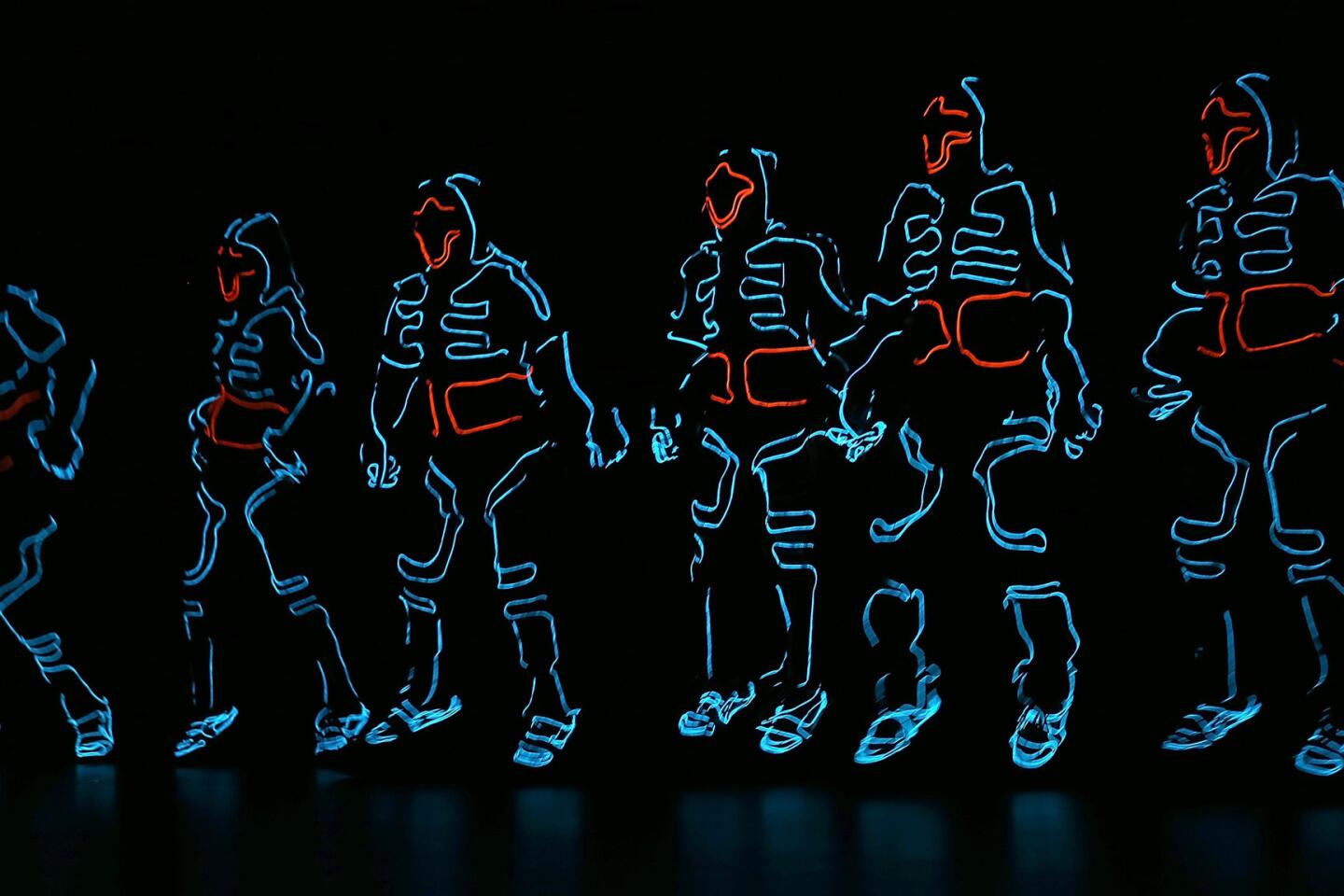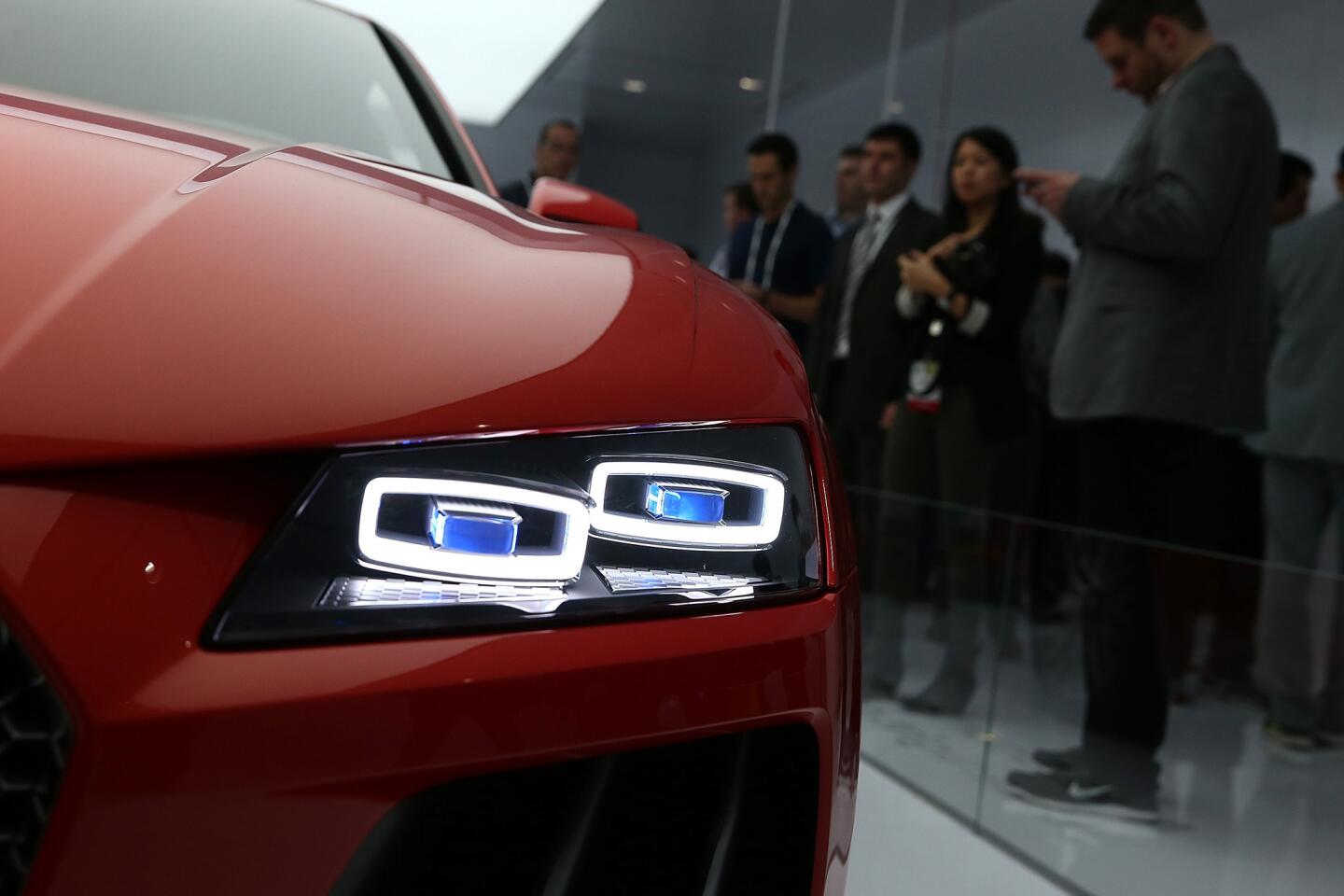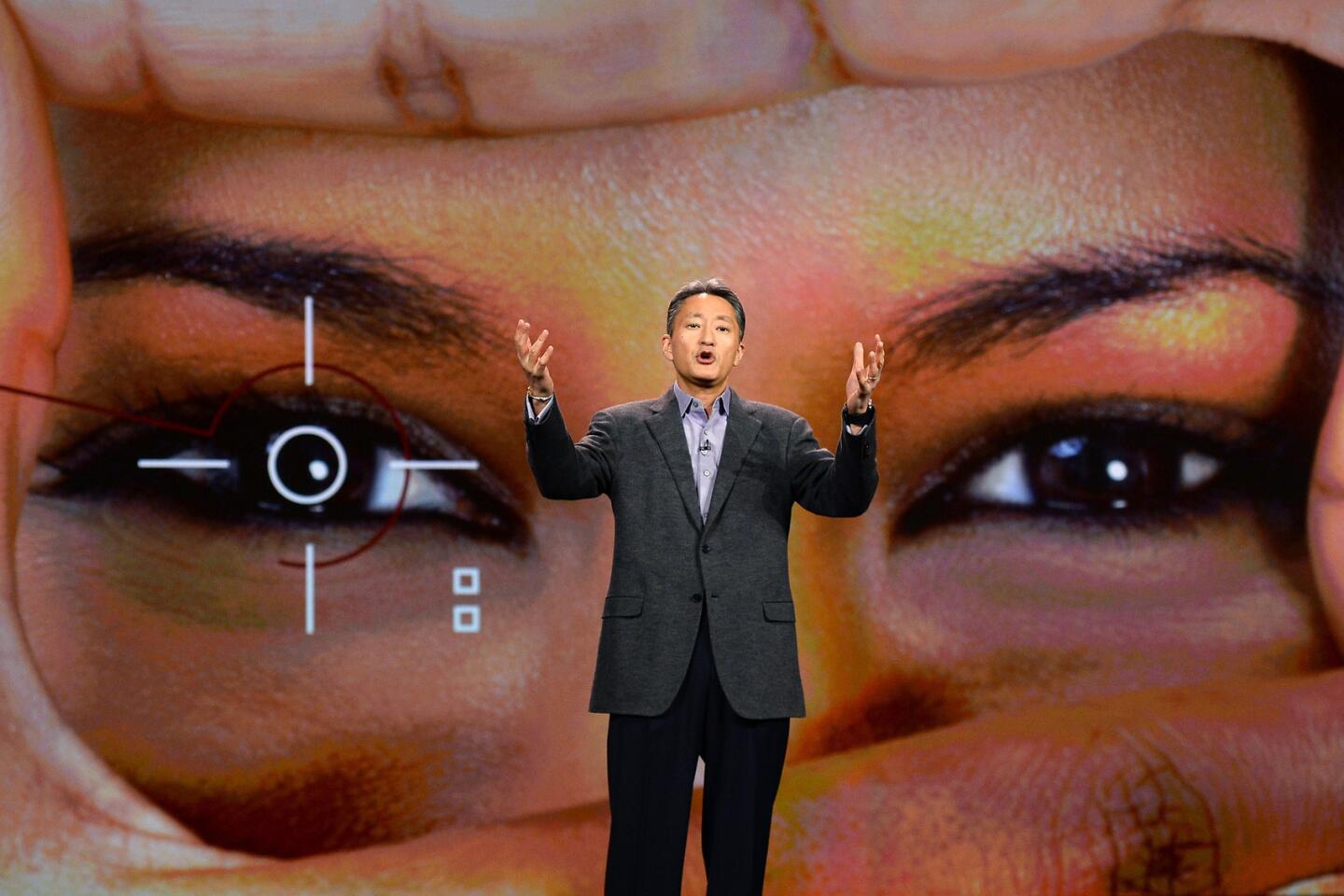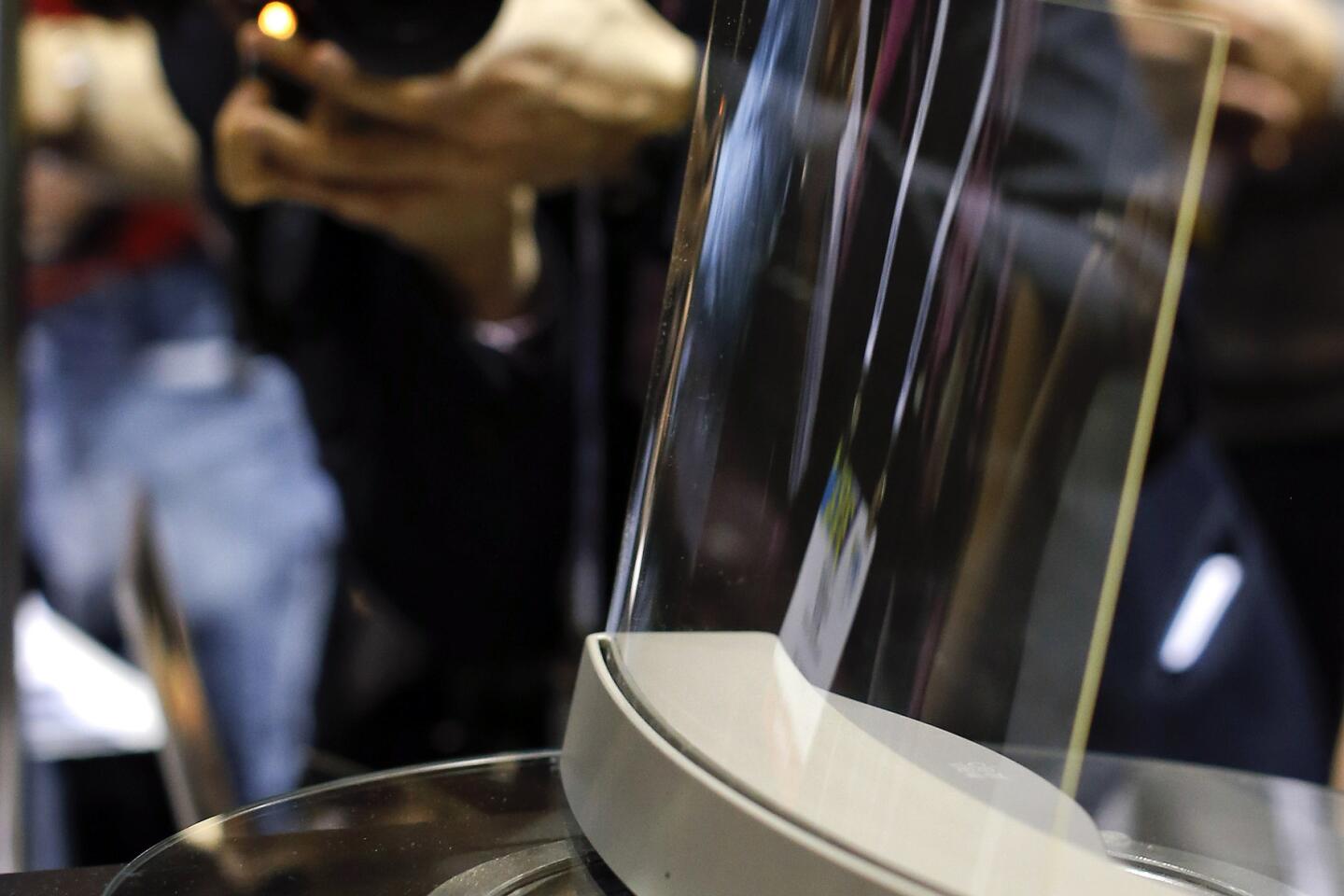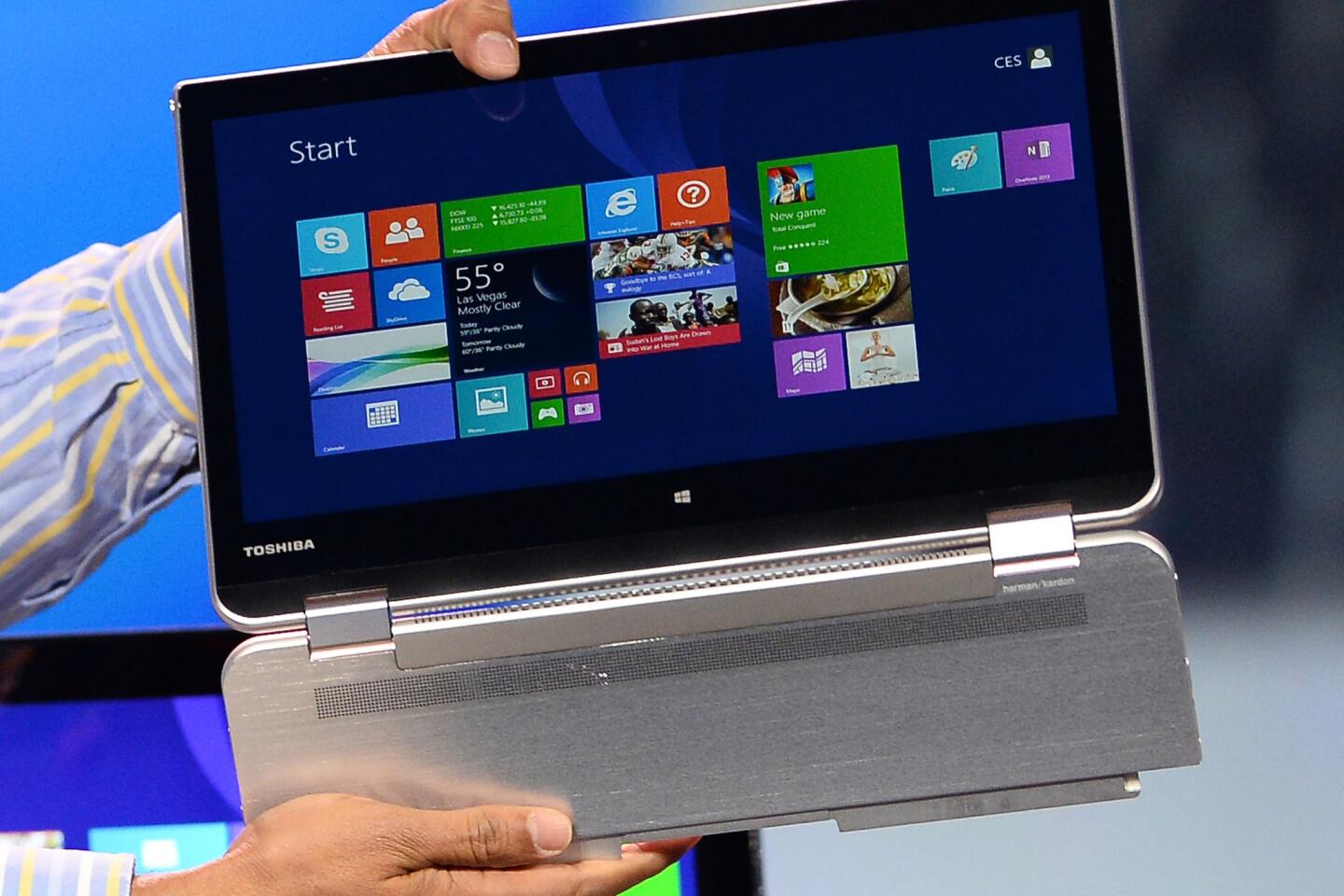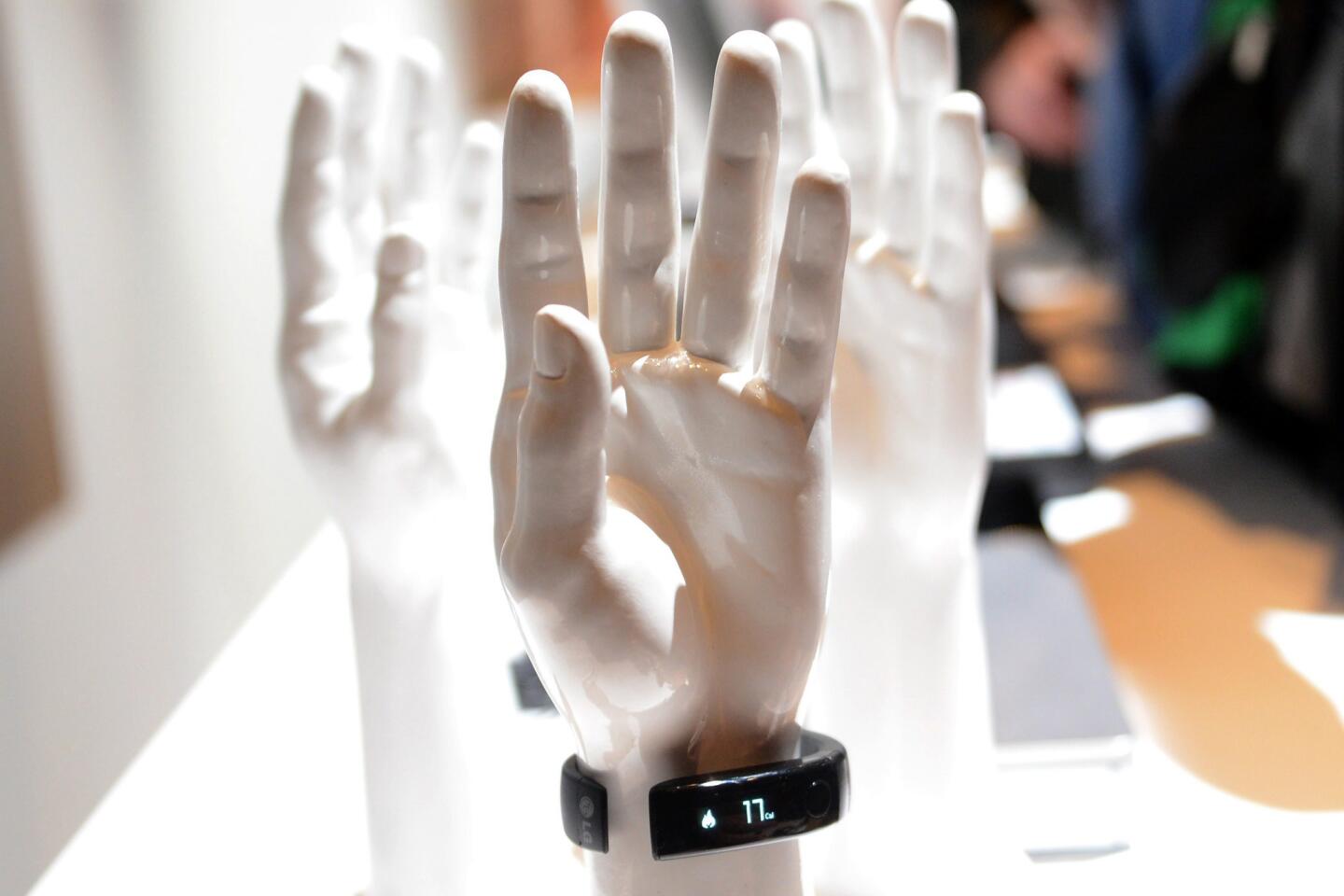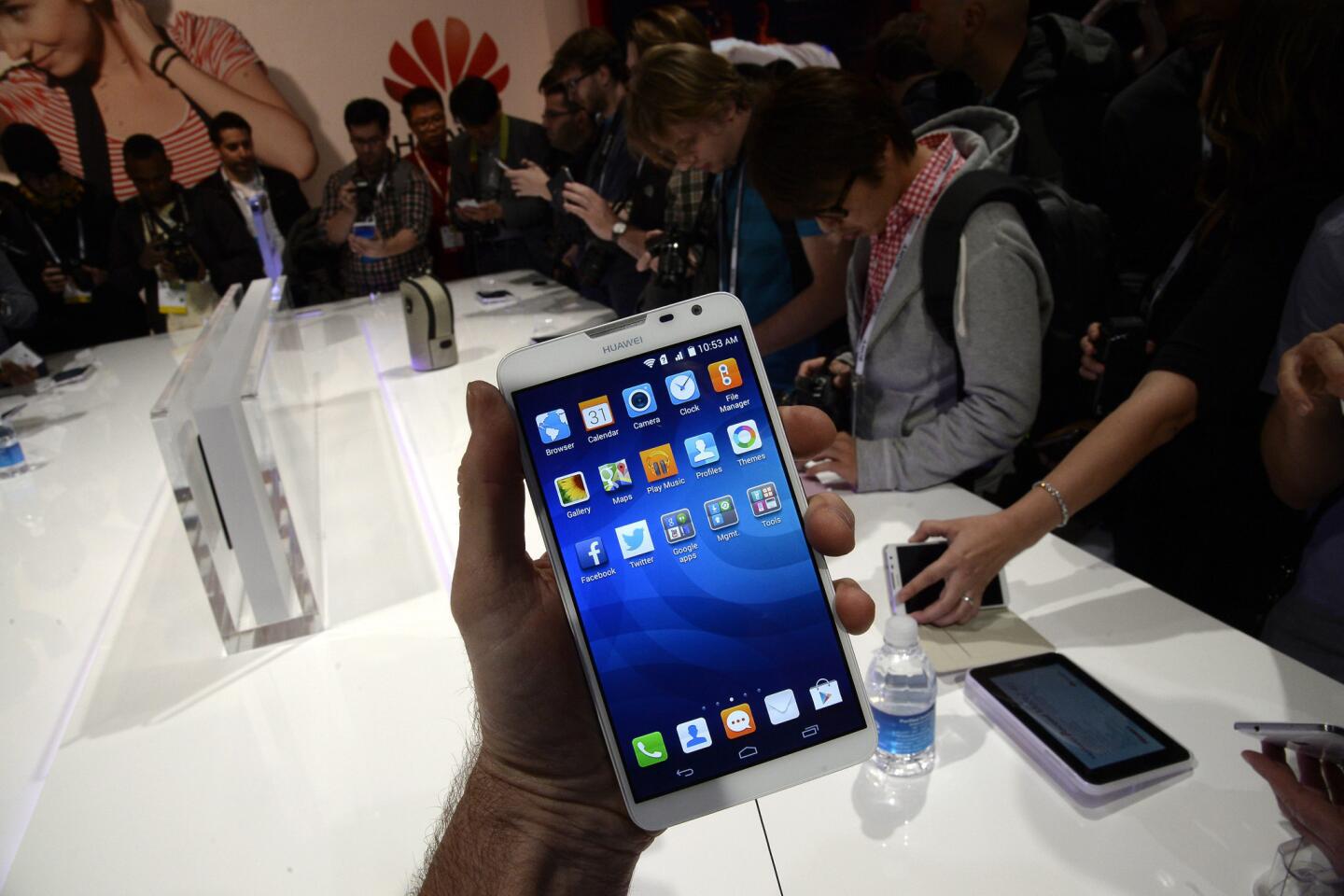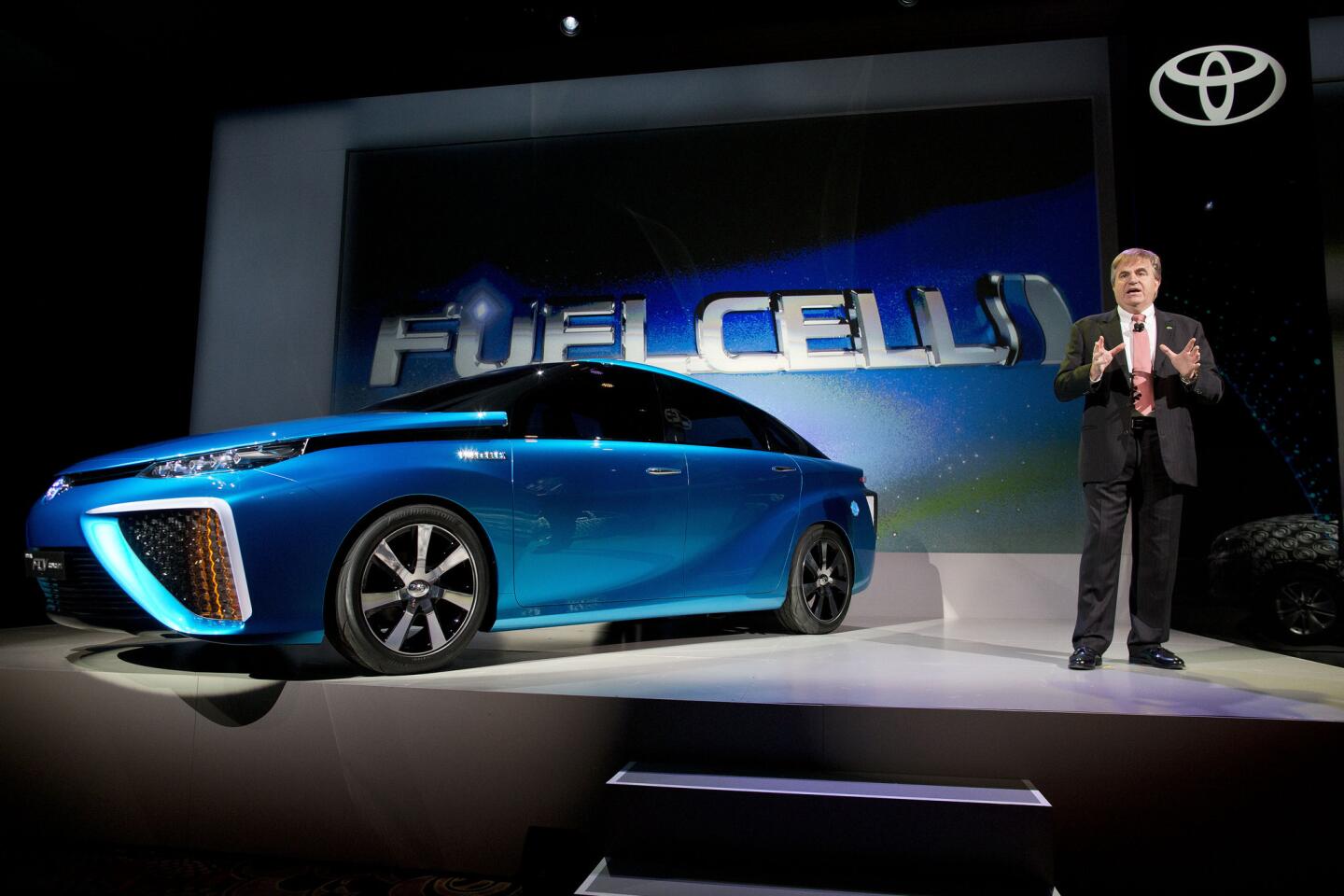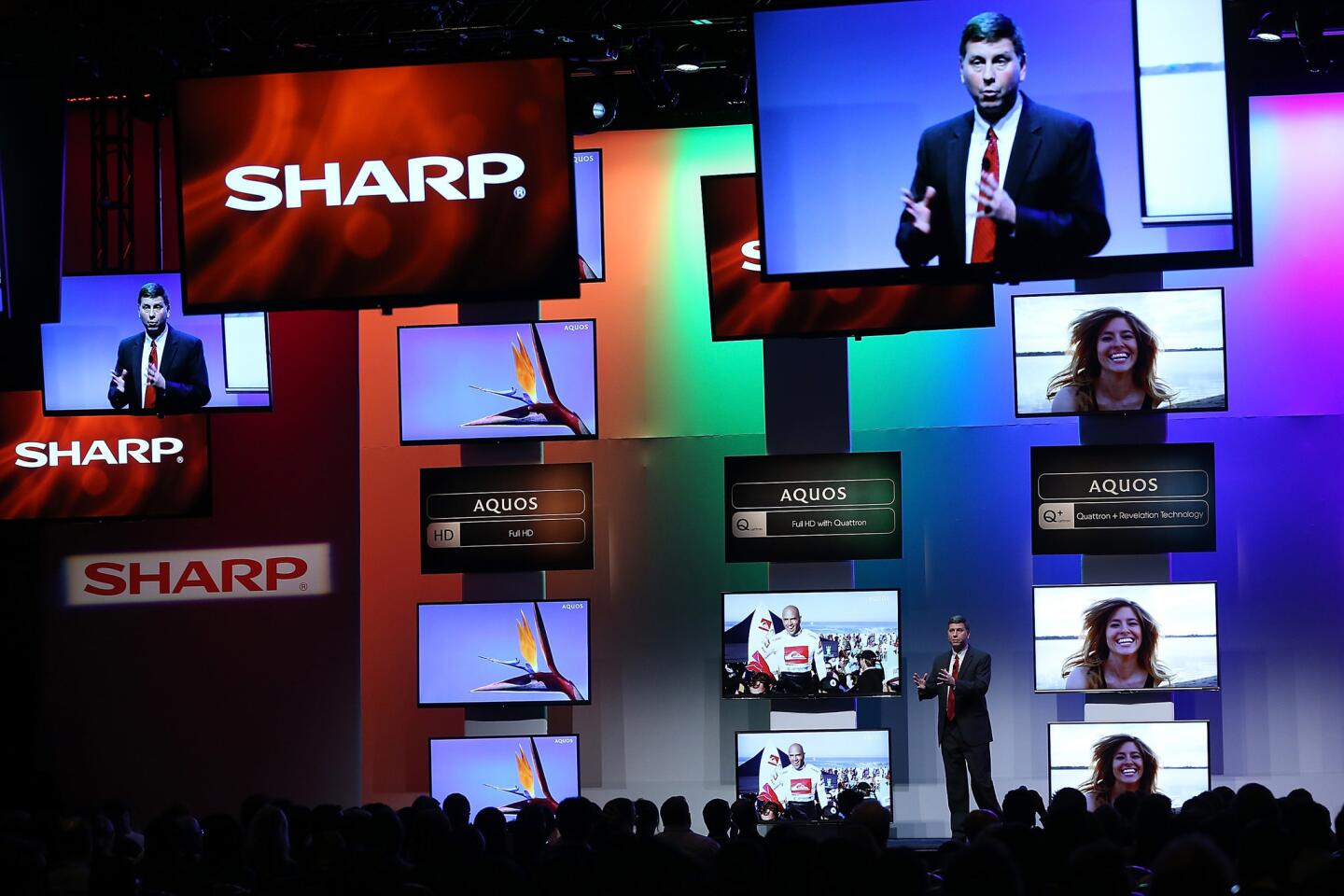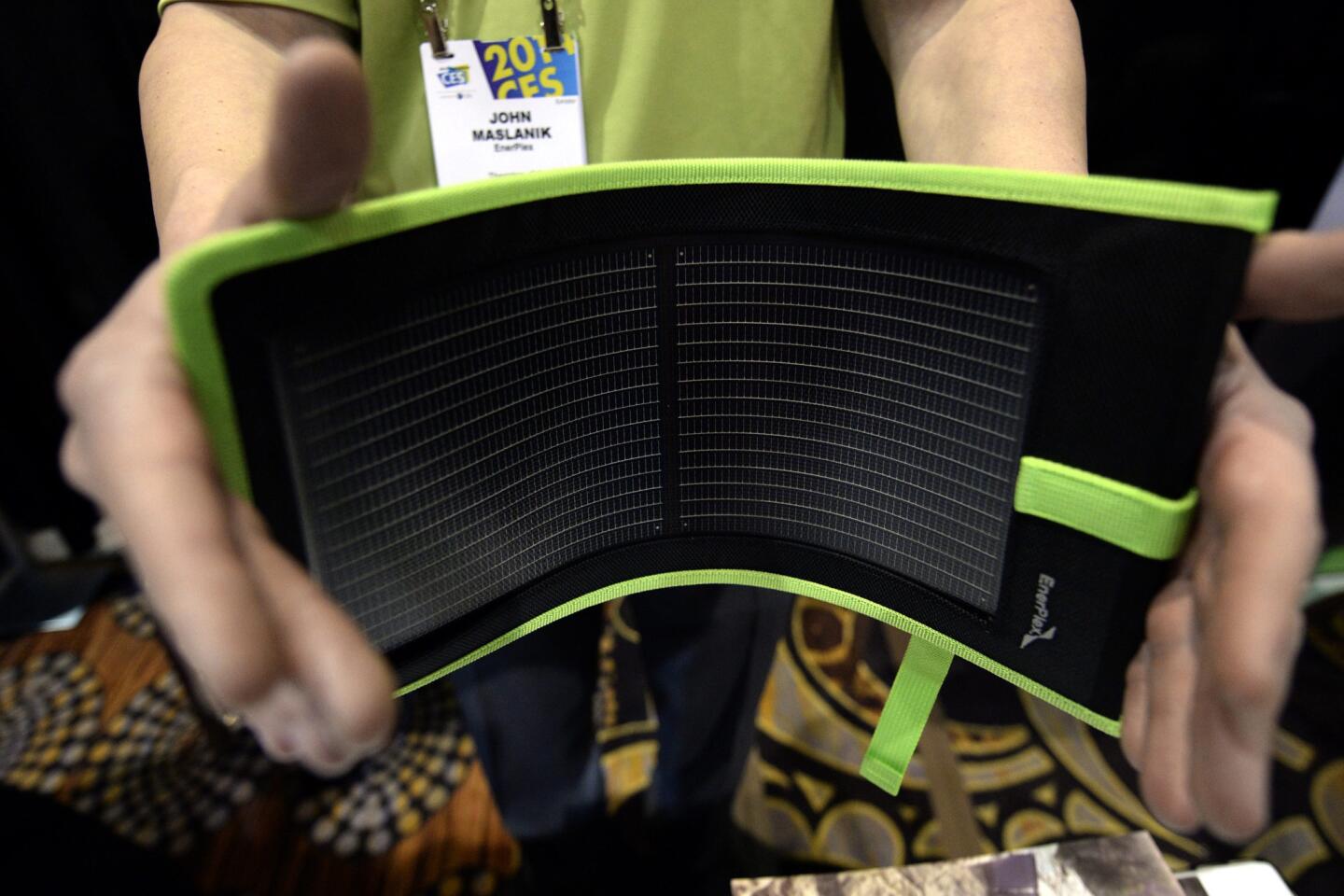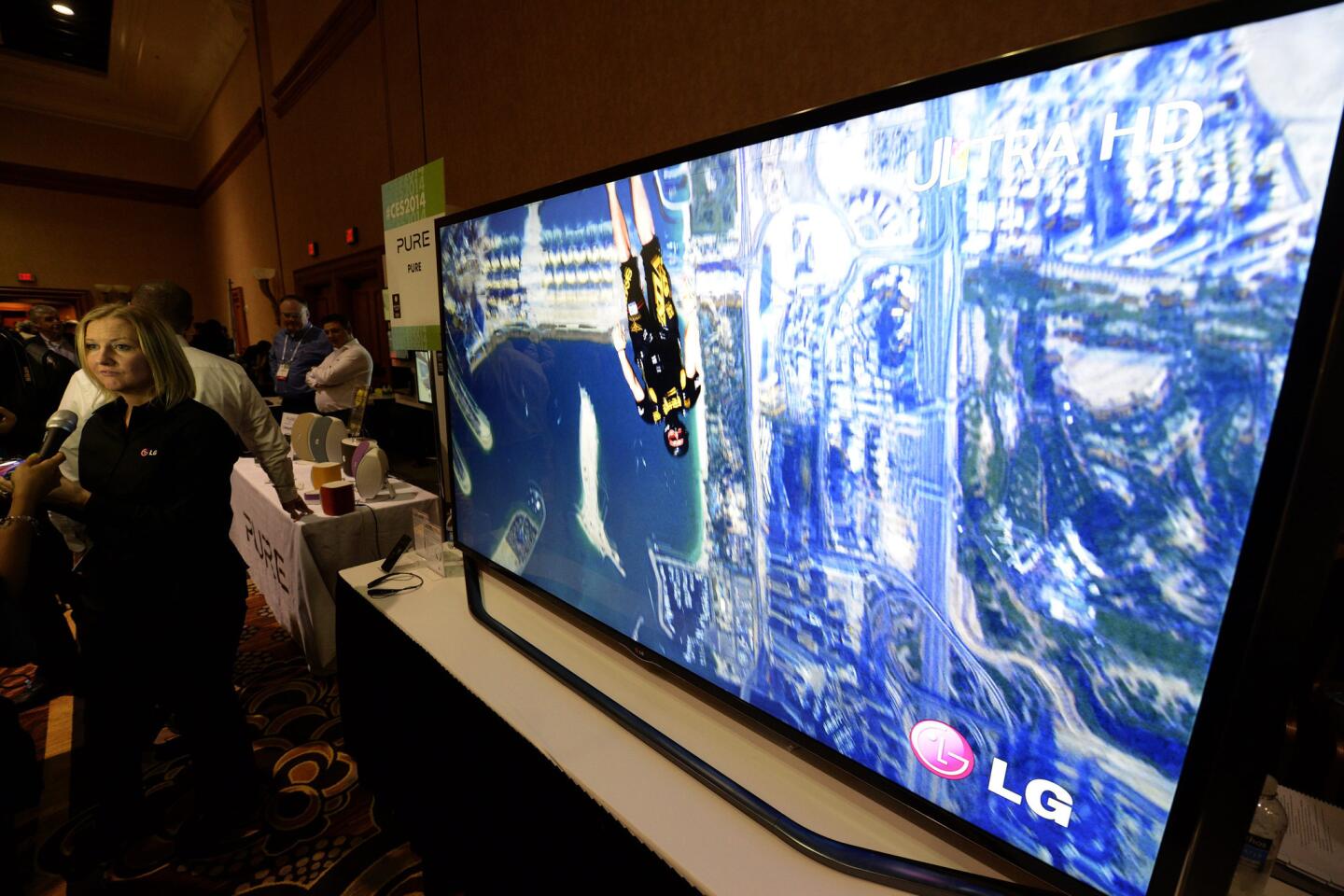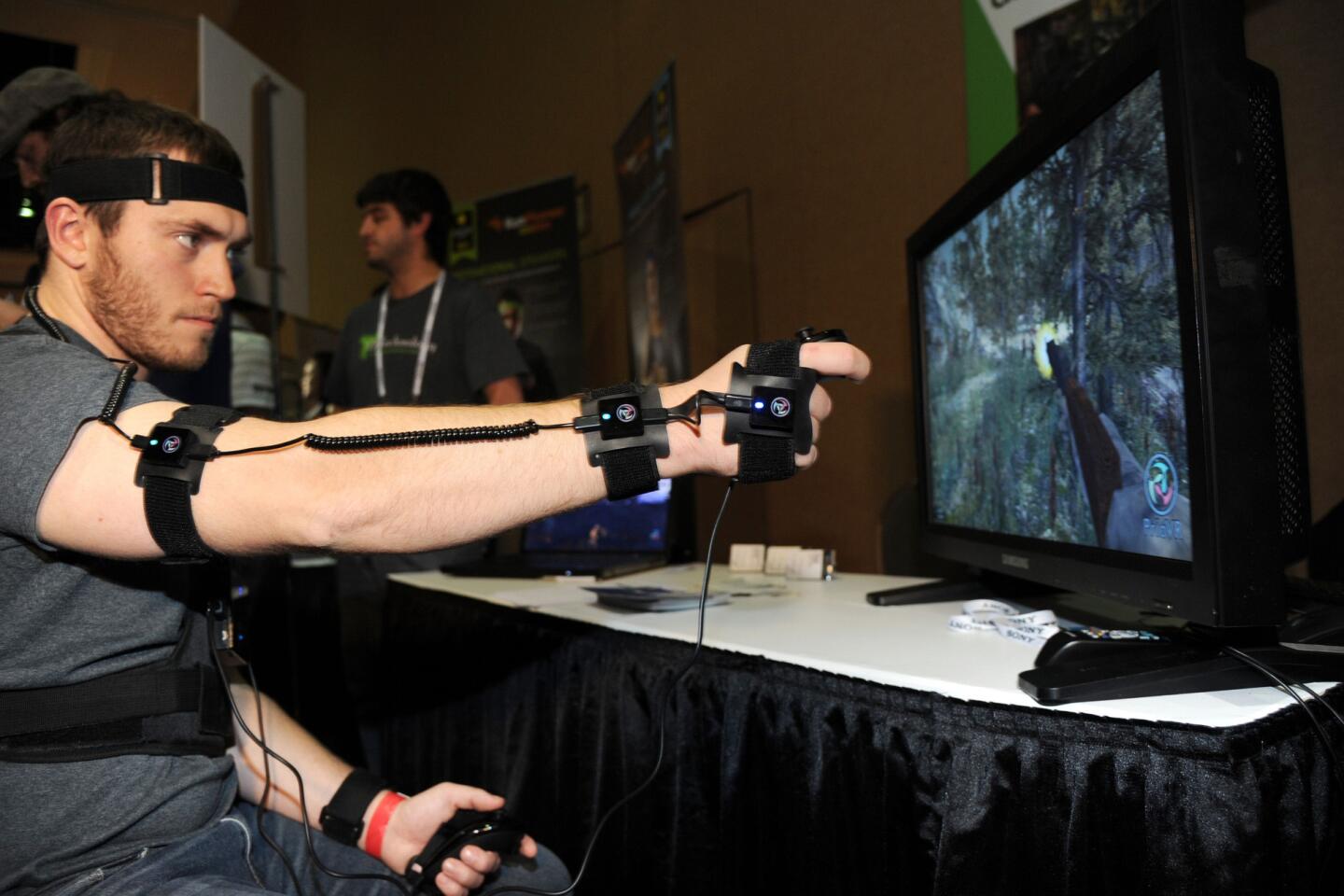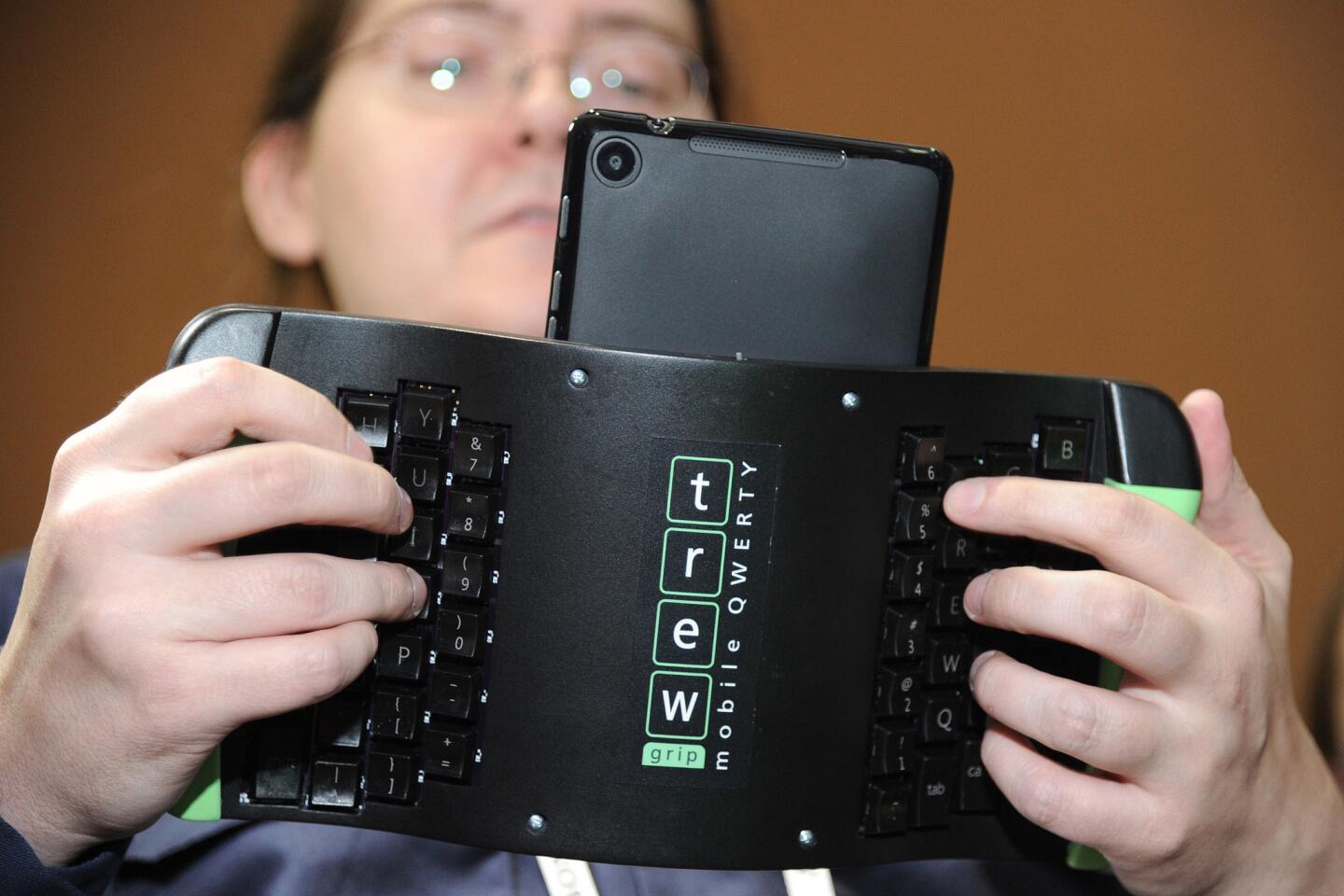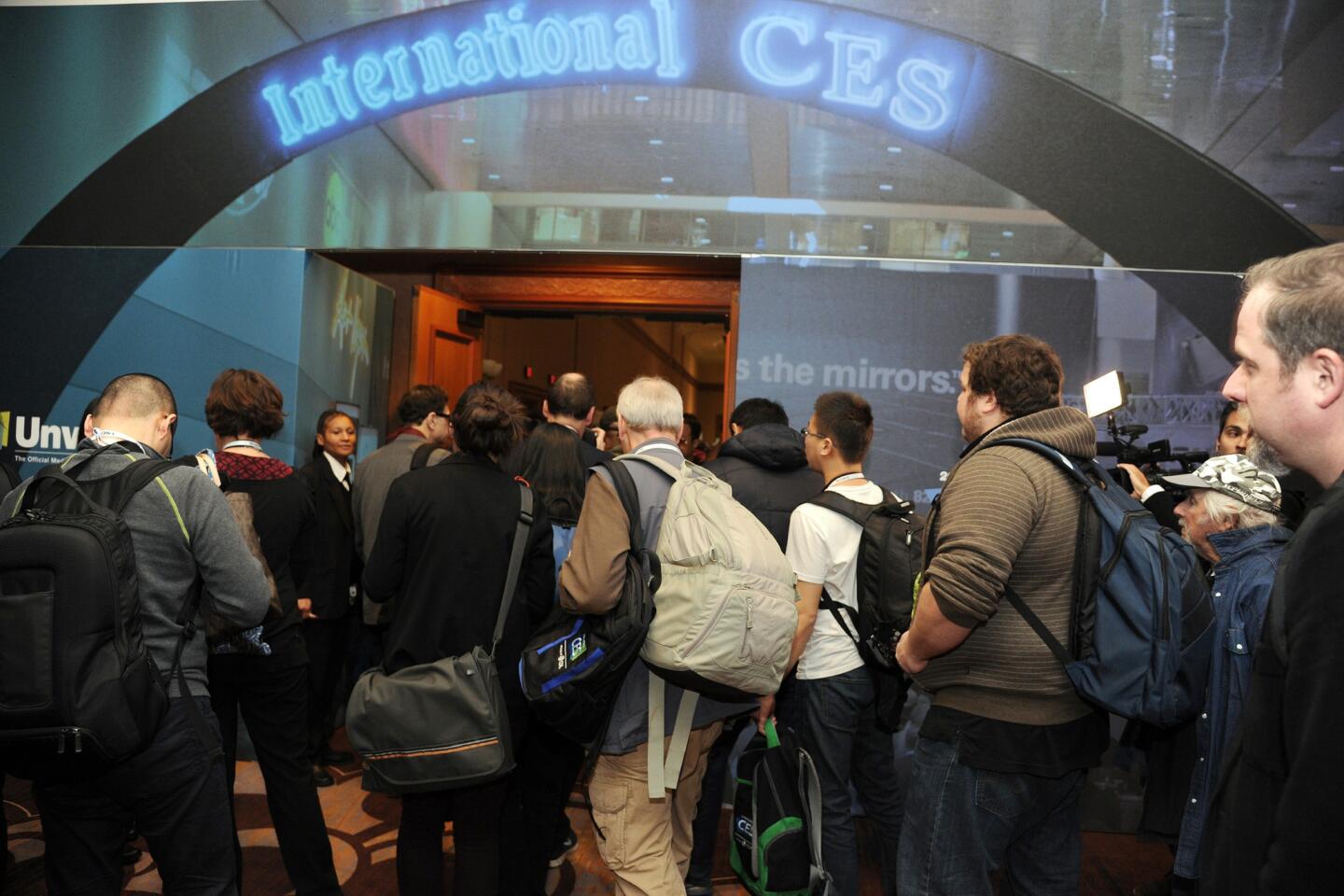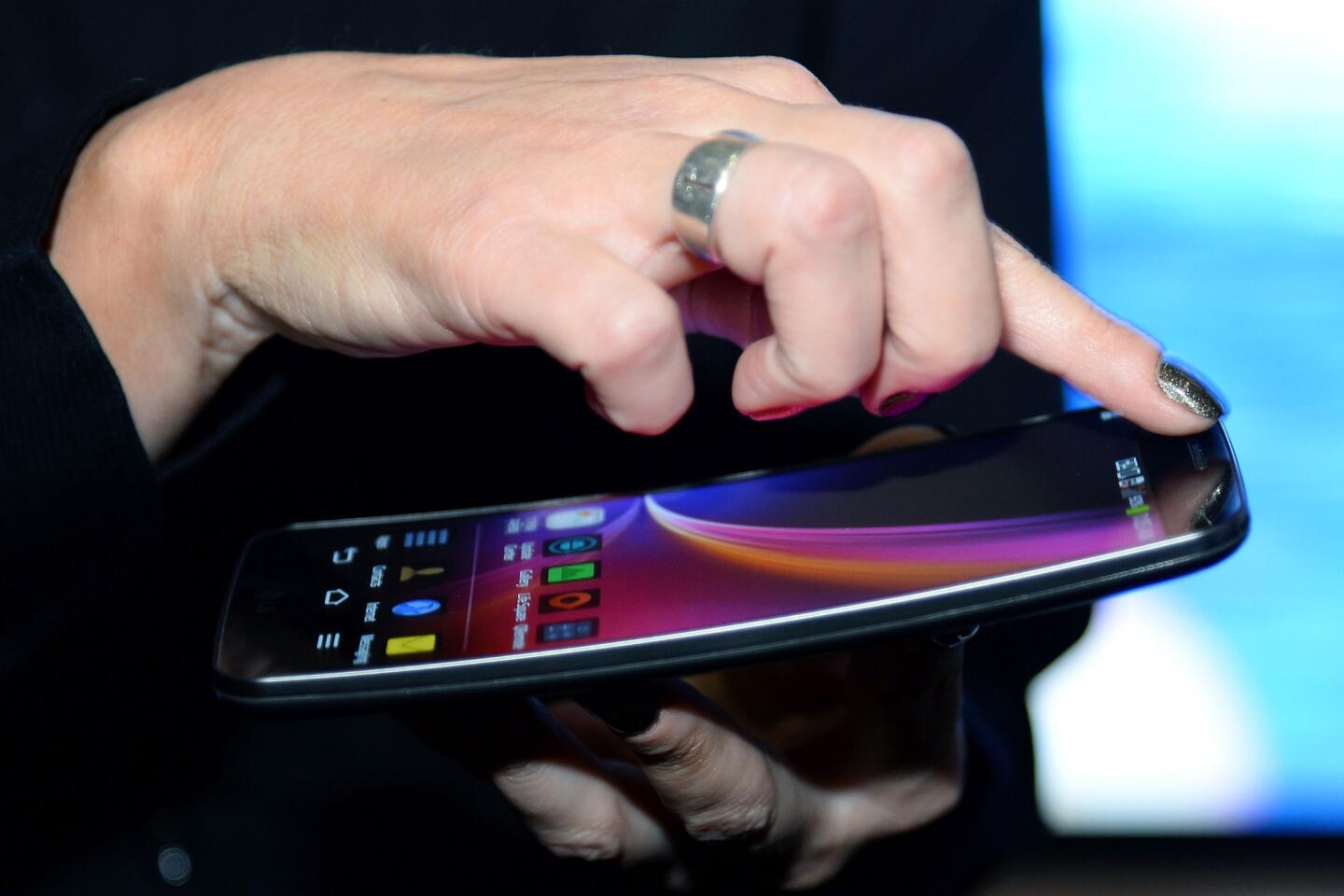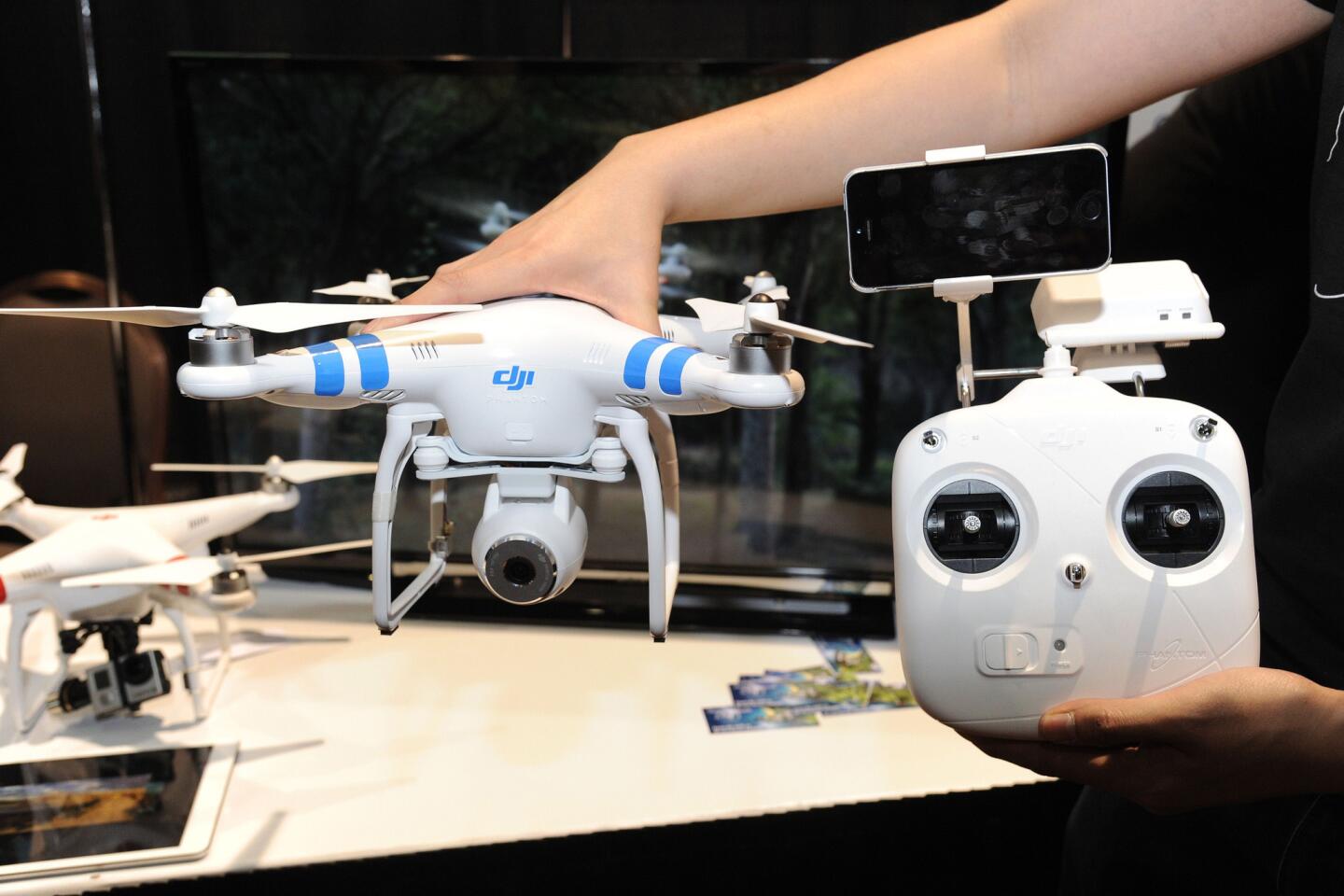Ultra-HD TVs get lots of hype at consumer electronics show
LAS VEGAS — Local resident Tony Holdip stood admiring the latest technological lust object on display at the world’s largest consumer electronics show as a friend joined a crowd of amateur photographers snapping pictures of the immense 110-inch Samsung TV.
“This is unbelievable,” Holdip said, and commented on the set’s brightness and image clarity. “The only problem I can see with this is it’s possibly too big.”
The Samsung Electronics Co. television set represents the next generation in home entertainment, “ultra-high-definition,” or “4K,” TV sets that boast four times the resolution of HDTV displays found in American households. Manufacturers are hoping to give consumers a reason to replace their current TV sets with ones that promise more vivid color and crisper images — not to mention a heftier price tag.
TV makers have been in search of the next big thing since 3-D TV sets sputtered in the marketplace. But some industry analysts warn that sharper picture alone may not be enough to coax consumers to spend thousands of dollars on a new set.
The advantages are not as clear as they were in the shift more than a decade ago from old-fashioned analog TVs to high definition, which offered a radically improved picture quality as well as a dramatically slimmer shape than the bulky cathode-ray tube sets that once dominated living rooms.
“It is simply not as compelling as the switch from regular analog TV to high definition,” said Colin Dixon, founder of research firm NScreenMedia. “The issue here is the switch from [high definition] to 4K is not as big of a quality upgrade.”
Manufacturers did their best to fuel excitement over the ultra-HD TVs at International CES in Las Vegas, sprinkling presentations with a bit of Hollywood stardust — with decidedly mixed results.
“Breaking Bad” creator Vince Gilligan’s appearance at the Sony Corp. keynote attracted considerably less notice on social media than did “Transformers” director Michael Bay’s meltdown. Bay abruptly walked off the stage during Samsung’s presentation after becoming flustered by a teleprompter malfunction. He later released a statement saying that he was “embarrassed” and that “I guess live shows aren’t my thing.”
Manufacturers Samsung and LG Electronics showcased curvy displays that performed a bit of electronic gymnastics: The screens flex from flat to curved with the press of a button and, according to the makers, afford a more cinematic experience. Screen sizes range from around 50 inches to Samsung’s 110-inch behemoth, which is expected to retail for as much as $150,000.
ON LOCATION: Where the cameras roll
Prices for non-curved 4K TVs appear to be falling. Vizio announced at CES that it will begin selling a 50-inch ultra-HD TV for about $1,000.
At CES, Internet streaming services Netflix, Amazon Instant Video and M-Go were among the first to jump on the ultra-high-definition bandwagon.
Netflix Inc. Chief Executive Reed Hastings appeared at the LG news conference to announce that Netflix would take the 4K plunge and offer the next season of its political drama “House of Cards” to subscribers in 4K resolution. The award-winning AMC series “Breaking Bad” also will be “upconverted” to the new, lush format. M-Go, a joint venture of DreamWorks Animation and Technicolor, showed off its ultra-high-definition service, which will launch on Samsung TVs in the spring.
Amazon.com Inc. said it would work with top Hollywood studios and television programmers, including Warner Bros., Lionsgate, 20th Century Fox, Discovery, to offer its customers 4K programming. Its Amazon Studios announced last month that it plans to shoot all its 2014 original series in 4K.
Hollywood’s film studios are expected to gravitate to the new format more readily than TV broadcasters — in part because about 25% of U.S. theaters already have 4K projectors capable of projecting movies in the more vivid images.
By contrast, the 4K TV audience in the U.S. is tiny. Only 60,000 ultra-high-definition TVs were sold domestically last year, with just under half a million projected to reach homes in 2014, according to the consumer electronics industry’s own estimates.
PHOTOS: Celebrities by The Times
Network executives privately expressed caution about 4K TV programming.
“I don’t see broadcasters embracing it,” said media analyst Michael Nathanson of research firm MoffettNathanson. “No one wants to throw more capital into a business unless there’s a return promised.”
Ultra-high-definition TV has caught on in China, which is leading the way in consumer adoption, according to NPD DisplaySearch analyst Paul Gray. China accounted for 87% of 4K television shipments in the third quarter of 2013 and is expected to be half of the global market through 2017.
However, there is some concern about whether the technology will find a profitable foothold. Ultra-HD is already being offered as a low-cost premium feature on TV sets, before broadcasters have agreed to a set of standards — such as a faster frame rate and enhanced color range — that could show off the sets’ abilities and excite consumers to buy at higher prices.
“The situation we have is eerily reminiscent of the 3-D story,” Gray said.
Times staff writer Richard Verrier contributed to this report.
More to Read
From the Oscars to the Emmys.
Get the Envelope newsletter for exclusive awards season coverage, behind-the-scenes stories from the Envelope podcast and columnist Glenn Whipp’s must-read analysis.
You may occasionally receive promotional content from the Los Angeles Times.
